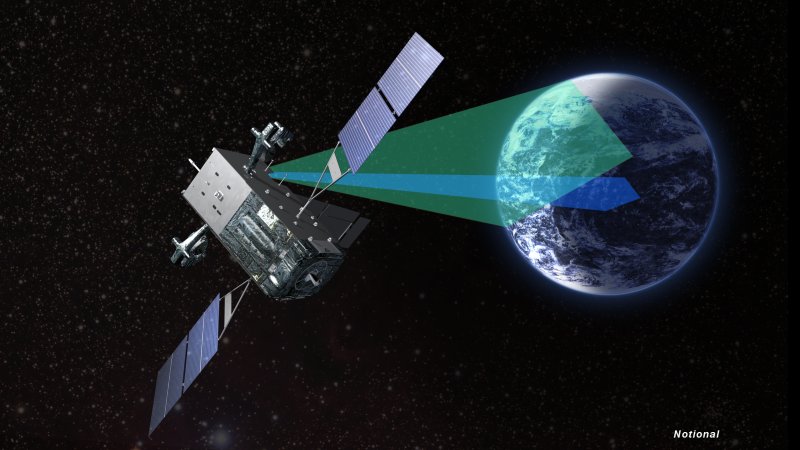Like the phrase “it’s a marathon, not a sprint,” the five-year-old Operationally Responsive Space Office has focused on the viability, applicability and achievability of rapid and responsive space in support of the warfighter today, tomorrow and in the future.
Under the leadership of its second director, Dr. Peter Wegner, the Department of Defense organization has accomplished giant strides in expeditiously designing, developing and deploying a satellite for operational use.
For example, the ORS-1 spacecraft, launched in June 2011, went from the drawing board to orbiting the Earth in 32 months.
Wegner, who assumed his current position on May 1, 2008, will leave federal civil serviceOct. 19 after a 20-year career to become the director of advanced concepts for Space Dynamics Laboratory, Logan, Utah.
“While serving with the ORS Office the past four-plus years, I tend to think about the programs such as ORS-1, but I need to take a step back to think about the fundamental principles established by this organization. We really have fundamentally changed the debate for using small satellites operationally,” said Wegner, a native of Clark, Wyo.
“During my first two years in the ORS Office, we were constantly defending our existence, but we fundamentally changed the debate. The ORS Office introduced unique architectural concepts in big space programs involving communication, global positioning system, weather, and in the intelligence, surveillance and reconnaissance side of the house. There is a greater acceptance now for the small satellite program due, in large part, to the ORS team.”
Reflecting on his tenure at the helm of ORS, Wegner cited three agency successes, which have significantly enhanced the DOD’s efforts in space. First, the ORS-1 satellite transitioned to full operational status less than seven months after liftoff, and has continued to provide battlespace awareness for U.S. Central Command. Second, ORS contributed funding to the Tactical Satellite-3 program, administered by the Air Force Research Laboratory’s Space Vehicles Directorate, which advanced the use of hyperspectral imagery during its 13-month demonstration mission.
In June 2010, the spacecraft became an operational asset for Air Force Space Command. Additionally, ORS has collaborated with several DOD organizations including the Air Force Space and Missile Systems Center’s Space Development and Test Directorate, Air Force Research Laboratory, U.S. Naval Research Laboratory, and the Defense Advanced Research Projects Agency.
Reflective of the partnerships, ORS-1 used the same modular bus as TacSat-3 and the upcoming ORS-2 mission (launch date to be determined) will feature space plug-and-play avionics also developed by AFRL.
After earning a bachelor’s degree in aerospace engineering from the University of Arizona, Wegner worked two years as a research engineer for AFRL’s predecessor, the Air Force Phillips Laboratory, at Edwards Air Force Base, Calif.
He then participated for more than six years in the Air Force Palace Knight Program, which financed his master’s degree in aerospace engineering from Stanford University and his doctorate in mechanical engineering from the University of Wyoming, as well as paid his full salary and benefits.
From January 1999 until August 2007, Wegner held various positions at Space Vehicles Directorate, including branch chief of the Spacecraft Component Technologies Center of Excellence and the responsive space thrust lead. Before joining ORS, he served as the Requirements Directorate technical advisor with Air Force Space Command, Peterson AFB, Colo.
Although departing work at a military installation, Wegner, in his new job at SDL, will continue to support DOD projects as he has in the past two decades.
“I am really excited about where the ORS Office is headed. There are two launches, ORS-3 and ORS-4, slated in summer 2013 that will lead to additional milestones in achieving rapid and responsive (within weeks to days) spaceflight. ORS is in a great position right now and I have no doubt that the office’s future is very bright and assured,” Wegner said.











